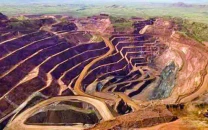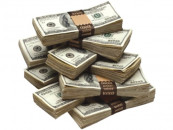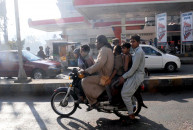Brokerage house expects 4.6% growth
Projects GDP higher than govt’s estimate for FY21 on back of booming LSM sector

Pakistan has shown a V-shape economic growth, which is now anticipated to grow to 4.57% in the outgoing fiscal year ending June 30, according to a securities-research house compared to the revised projection by the government at 3.94% for the year.
The additional growth, compared to the revised estimate of the government, would be recorded on back of booming large scale manufacturing sector and wholesale and retail sector in the fourth quarter (April-June) of the outgoing fiscal year 2020-21, Arif Habib Limited (AHL) said in a brief report.
The AHL forecast is a double surprise to the nation. Earlier, on May 21 (Friday), the National Accounts Committee (NAC) had upward revised projection for economic growth to a surprising level of 4% for the current fiscal year against forecasts in the range of 1.3-3% by Pakistan’s central bank, International Monetary Fund (IMF) and World Bank.
AHL analyst Sana Tawfik estimated industrial growth at 5.89% in the full outgoing fiscal year compared to the government’s projection at 3.57% for the year. Growth in the industrial sector would be backed by the fast-growing large scale manufacturing sector (LSM), which is estimated to grow by 14.1% compared to the government’s projection at 9.29% for the full year.
Similarly, the estimated growth in service sectors would be recorded at 4.73% compared to the government forecast for 4.43% in FY21. The higher growth in the services sector would come from wholesale and retail trade which is estimated to surge by 9.4% compared to the projection by the government at 8.37% for FY21.
The agriculture sector, which is one of the three dominant sectors of the economy, is estimated to grow by 2.77%.
To recall, the economy recorded negative growth of 0.47% in the previous fiscal year 2020-21.
“Last year’s low base along with revival of the economy contributed towards…exceptional growth in FY21,” she said.
Moreover, as highlighted by the central bank in its latest monetary policy statement, other high-frequency indicators to the likes of sales of fast-moving consumer goods, automobiles, cement, petroleum products and electricity also played a role in the overall robust growth of the economy.
“If we delve into the details; the manufacturing sector alone rebounded by 8.7% year-on-year, after contracting by -7.4% in FY20. This was primarily due to large scale manufacturing (LSM) growth of 9.3% year-on-year, which we believe will be further revised upwards once the actual numbers (incorporating 4QFY21) are finalised by the authorities,” she said.
Wholesale and retail trade marked a significant jump of 8.4% year-on-year against a target of 1.1%, mainly on the back of improved trade volumes including import and exports. “Once the numbers are finalised by the government, we believe this growth will be around 9.4% in FY21,” the analyst said.
Moreover, finance and insurance sub-sector also grew by a significant 7.8% year-on-year against a target of 3% given the improved inflows to the overall banking sector witnessed during the period, strengthening the financial intermediation of the sector. In addition, the recent upsurge in IT export services also played a significant role.
Overall, the services industry (the leading contributor to the GDP) accounts for almost 61% of total GDP, highlighting the growing importance of IT business. Going forward, with prioritisation of structural reforms, ongoing agricultural development initiatives, digitisation efforts, measures to boost industrial activities and several other steps taken by the concerned authorities, the direction has been set by the government to drive the economy at a higher pace, 5% in FY22 and 6% in the medium term, the analyst concluded.
Published in The Express Tribune, May 30th, 2021.
Like Business on Facebook, follow @TribuneBiz on Twitter to stay informed and join in the conversation.



















COMMENTS
Comments are moderated and generally will be posted if they are on-topic and not abusive.
For more information, please see our Comments FAQ